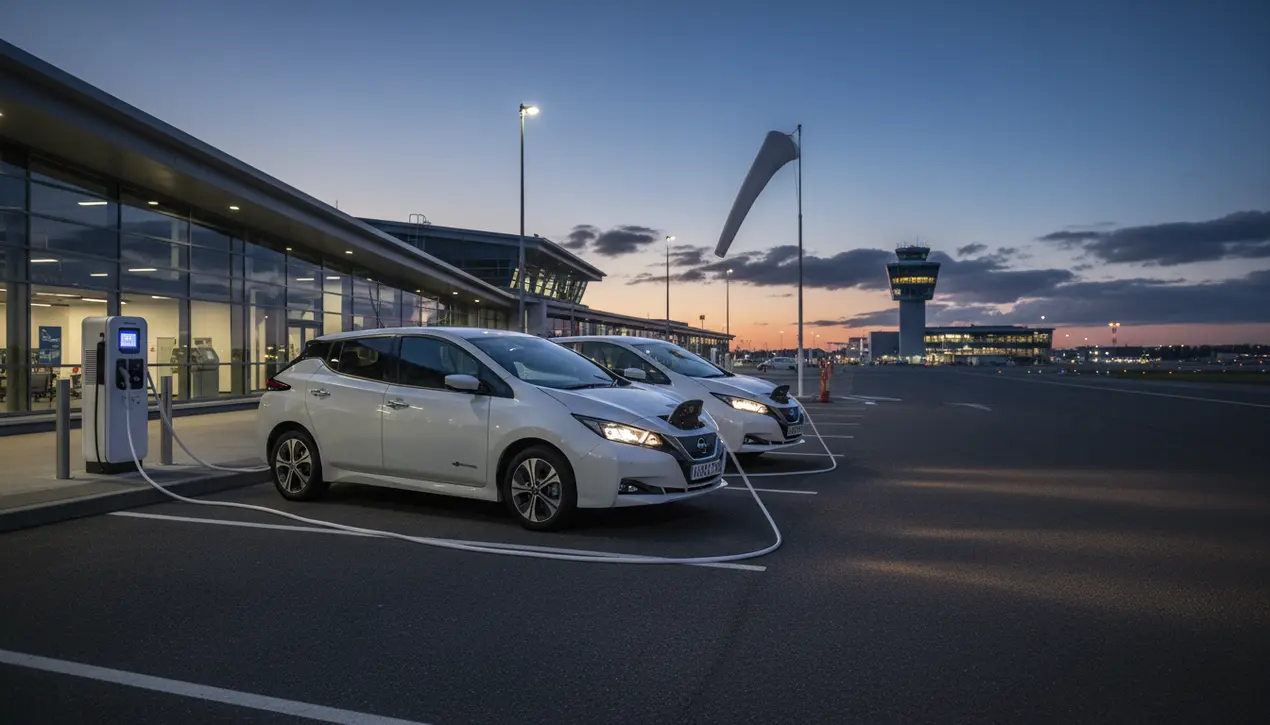
Otherauto & mobilityElectric Vehicles
How two Nissan Leafs help make a regional airport more resilient
AN
Andrew Blake
1 hour ago7 min read1 comments
The narrative of vehicle-to-grid technology has long been dominated by the heavy-duty contenders—the hulking electric school buses and the brawny electric pickups serving as mobile power banks. But a quiet, compelling revolution is unfolding at a regional airport, where the deployment of two unassuming Nissan Leafs is proving that resilience isn't just about raw power; it's about smart, adaptable integration.This isn't a story of brute force, but one of elegant efficiency, challenging the very premise of what an energy asset looks like. The Nissan Leaf, often overlooked in the V2G conversation for its more modest battery capacity compared to a Ford F-150 Lightning, is demonstrating a powerful truth: accessibility and scalability matter.While a single large vehicle can provide a massive jolt of electricity, a fleet of smaller, more affordable EVs can create a more distributed, flexible, and ultimately more robust network. Imagine an airport, a critical piece of regional infrastructure, suddenly faced with a grid outage.Instead of relying solely on expensive, often diesel-guzzling backup generators, it can now tap into a decentralized power source sitting in its own parking lot. The Leafs act as a swift-response team, bridging the crucial gap before larger systems kick in or until grid power is restored, ensuring that air traffic control systems, security checkpoints, and essential communications remain online.This application opens up a fascinating new chapter in energy economics. For the airport, it transforms a capital expense—vehicle procurement—into a dual-purpose investment that also enhances operational continuity and potentially generates revenue by selling power back to the grid during peak demand.For the broader energy ecosystem, it suggests a future where millions of passenger cars, not just specialized commercial fleets, become integral components of a smarter, more resilient power grid. The implications ripple outwards, touching on everything from reducing the need for peaker power plants, which are often major polluters, to providing a financial incentive for EV adoption through energy credits. This case study at a regional hub is a microcosm of a much larger potential, a proof-of-concept that the path to a stable energy future might be paved not by a few giants, but by a multitude of smaller, interconnected players, quietly humming in parking lots, ready to serve when called upon.
#Electric Vehicles
#V2G
#Nissan Leaf
#Airport Resilience
#Energy Storage
#featured
Stay Informed. Act Smarter.
Get weekly highlights, major headlines, and expert insights — then put your knowledge to work in our live prediction markets.
Comments
Loading comments...
© 2025 Outpoll Service LTD. All rights reserved.